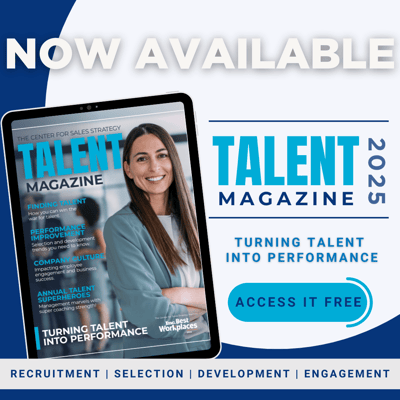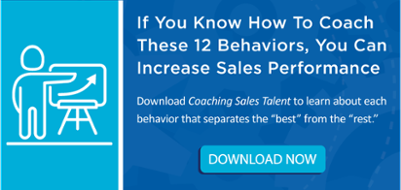
If new employee onboarding procedures are insufficient, it can take up to 12 months for new hires to reach max productivity. In a world where employees don't stay at jobs for the entire duration of their career, this is horrific.
New employee onboarding has always been an issue. There are always holes in an onboarding process, and some companies seem better at it than others. Throwing new hires in and expecting them to swim no longer works.
This is especially true in our new hybrid working world. New employees are required to coexist in a virtual and real world, and be able to seamlessly toggle between the two.
To counteract these struggles, it's important to stick to a consistent employee onboarding checklist. To help you do that, we've assembled steps that will consolidate your processes and make new employees feel informed, safe, and ready to start being productive!
Start with Pre-boarding
 In the old days, it used to be simpler. After an agreement had been reached, employees would be given a start date and were expected to show up. In the gap between agreement and start, they would give notice to a previous employer and finish out their two weeks.
In the old days, it used to be simpler. After an agreement had been reached, employees would be given a start date and were expected to show up. In the gap between agreement and start, they would give notice to a previous employer and finish out their two weeks.
Now, a new employer needs to leverage that gap between agreement and start. This time can be used to implement the valuable practice of pre-boarding.
Pre-boarding doesn't start on an employee's first day. Instead, pre-boarding is valuable as soon as new hires sign on the dotted line.
If you're looking for a new hire, you've indisputably put some time in. From crafting the job description to sifting through hundreds of resumes, it takes time to find diamonds in the rough.
By the time you extend an offer, you've put in the time. But don't get complacent! That gap can be dangerous, and 20% of employees leave a job within the first 45 days. Others just ghost their new employer.
This happens because employees often abide by the 'better the devil you know than the devil you don't' principle. A lack of information, expectation-setting, and uncertainty can contribute to this issue.
That's why you need a rigorous pre-boarding checklist. Start by informing employees about everything they might need to know.
This can often be done in video form. From explaining culture to doing a walkthrough, this gives employees an idea of what to expect. This can eliminate uncertainty, but what about questions?
Use the Buddy System
New hires don't know what to wear, whether you have a BYOD policy, where to park, and whether they should bring their lunch. Videos can help target FAQs from new hires, but you likely need a more personal connection.
That's where a pre-boarding buddy comes in. After a new hire signs the contract, assign them a mentor. This will give them a foot in the door and allow them to connect with a future coworker in a low-stakes way.
This mentor/onboarding buddy should be responsible for serving as a first point of contact. This gives new hires someone to ask questions without feeling like they're being a pest.
This mentor should also set up an introductory email and lunch. An email will help introduce a new hire's name, position, location, and professional background to their new coworkers. The lunch allows them to network in a low-stakes environment.
What's the end goal of pre-boarding? To mitigate some of the stress of onboarding, and keep new employees invested in the process.
Don't Rush
What's one of the fastest ways to lose a new employee? Bungle the onboarding process. Over 25% of American employees leave new jobs because the initial days of a new role were so bad.
Especially when it comes to salesperson training, results are everything. New employees want to know if they made the right choice by leaving their old job. Employers want to know if they picked the right person.
Because it's so expensive to hire and train employees, and because it can be quite challenging to find a new role, both parties are trying to make a judgment call at warp speed. This can lead to shoving salespeople into the wild before they are ready.
This often results in panic, frustration, and insecurity. That's why you need a solid educational plan to make sure new hires have been appropriately onboarded.
Start by assigning them a veteran mentor. Depending on the size and scope of your company, this is likely a different person than their initial onboarding buddy.
Then, start by assembling a resource-oriented employee onboarding list.
Educate Them
Salesperson training requires new hires that have the ability to think on their feet. To do so effectively, however, they need to be well-trained.
Start with the history of your company. How did you start, what are the names of the founders, and what are the company values? The roots, mission statement, and values will govern all interactions with both customers and other employees.
Once that's done, move onto product education. Depending on your company's history, you may have loyal customers that have been shopping with you for decades. What does that mean?
It means they will know more about your products, how they work, how to troubleshoot, and more. If your hires aren't up to par, these veteran customers will know quickly.
Give new salespeople a chance to use the products, if possible. Make sure they have a database of product manuals, troubleshooting guides, and all other information.
They should also know what problems your products solve. At first glance, this seems like it should be covered by knowing what the products do.
However, knowing the problem allows salespeople to identify symptoms of the problem. When a patient is listing pain points, the doctor is able to put these together and result in a diagnosis.
The same thing is true when it comes to salesperson training. Customers will identify pain points, and it's the salesperson's job to pick up on them and present your product as a solution.
What Do You Want From Them?
Starting a new job can be scary! For new employees, feelings of insecurity or being overwhelmed can often result in leaving a new job.
Insecurity occurs because everyone in your organization is already well-trained, competent, and killing it in their roles. By contrast, new hires don't even know where the restrooms are located and may be really new in their career.
Of course, no reasonable employer expects a new hire to know everything right off the bat! It takes time to get up to speed and to perform at the same level as veteran employees.
But it's still easy to get trapped in feelings of insecurity. New employees may not know if they're performing well or poorly, which may put them on edge as they fear warnings or termination.
How can you help mitigate this fear? Provide a clear roadmap for their first thirty, sixty, and ninety days. Depending on the nature of your industry, employees will likely be able to formulate their own goals after this ninety-day trial period is over.
This roadmap will give employees something to shoot for and give managers something to measure employee progress against. With clear expectations, the playing field is leveled in a way that makes sense to everyone.
Virtual Onboarding
We're working in a hybrid world these days, and after the global impact of COVID-19, many employers are abandoning the concept of in-person work entirely. With that being said, how are you supposed to successfully translate best onboarding practices into a virtual environment?
Start by assessing how you build company culture with your existing employees. How do they bond, make mentorship connections, and communicate with each other in a virtual environment?
This may mean dedicated Slack channels, scheduled check-ins with mentors, and more. Virtual onboarding equals a slight change in priorities.
Rather than making sure employees know where to park and what the dress code is, make sure they have access to everything. Secure, seamless access to company resources is one of the biggest roadblocks you must remove in a virtual environment.
Whether it's the company Slack channel or new applications being downloaded onto a company device, make sure your IT team is ready for a new hire. This will help bring new hires up to speed and make them feel like a valuable part of the organization.
Best Practices for New Employee Onboarding
Taking the time to prioritize a comprehensive approach to new employee onboarding will bolster productivity, reduce turnover, and build confidence in your company's culture.
To make an employee onboarding checklist work for new hires, make sure that you treat each new employee as a learning opportunity. For instance, a lunch to introduce new hires might not work if you have seasonal periods where you're flooded with new employees.
However, assigning each new hire with an onboarding buddy might be a saving grace for your company. Glean something from each new onboarding experience, and it will be much easier to streamline a repetitive, consistent process that works for everyone.




